I totally lucked into composting. When I bought my first house, I had a huge pile of leaves in the woods. Since I moved in in summer, I had a ton of grass clippings that had to get dealt with, so they went on the leaf pile. For some reason I turned the grass into the leaves, and some interesting things started happening. I began to see worms out there. The pile would steam sometimes. I probably didn’t know it but I was making compost.
Actually…I kind of had an inkling what was happening. I began reading up on compost. I found out some things that would make compost “happen” faster, and make the process generally better. Since then I’ve had a compost pile everywhere I’ve lived, save one apartment in a major city.
The Benefits of Compost
If you don’t compost, you should. Compost is incredibly scalable; your compost can be a few shovelfuls, or a truck load. Composting is an incredibly elegant process that turns literal garbage into something valuable. It also prevents that garbage from ending up consuming space and producing methane in a landfill. Even if it did none of those things (or you don’t care about them) it’s a completely free way to generate an awesome resource.
The product of compost is, basically, dirt. Really, really awesome dirt (actually hummus). The bacteria, worms, and heat in your compost pile/bin/container take organic matter and reduce them down to very fine pieces or hummus. Hummus contains a ton of nutrients and basically equates to free, organic fertilizer. It also contains a lot of healthy bacteria and worms, both of which are really good for the health of your soil. Finally, hummus also holds water exceptionally well, meaning you need to water your garden less often.
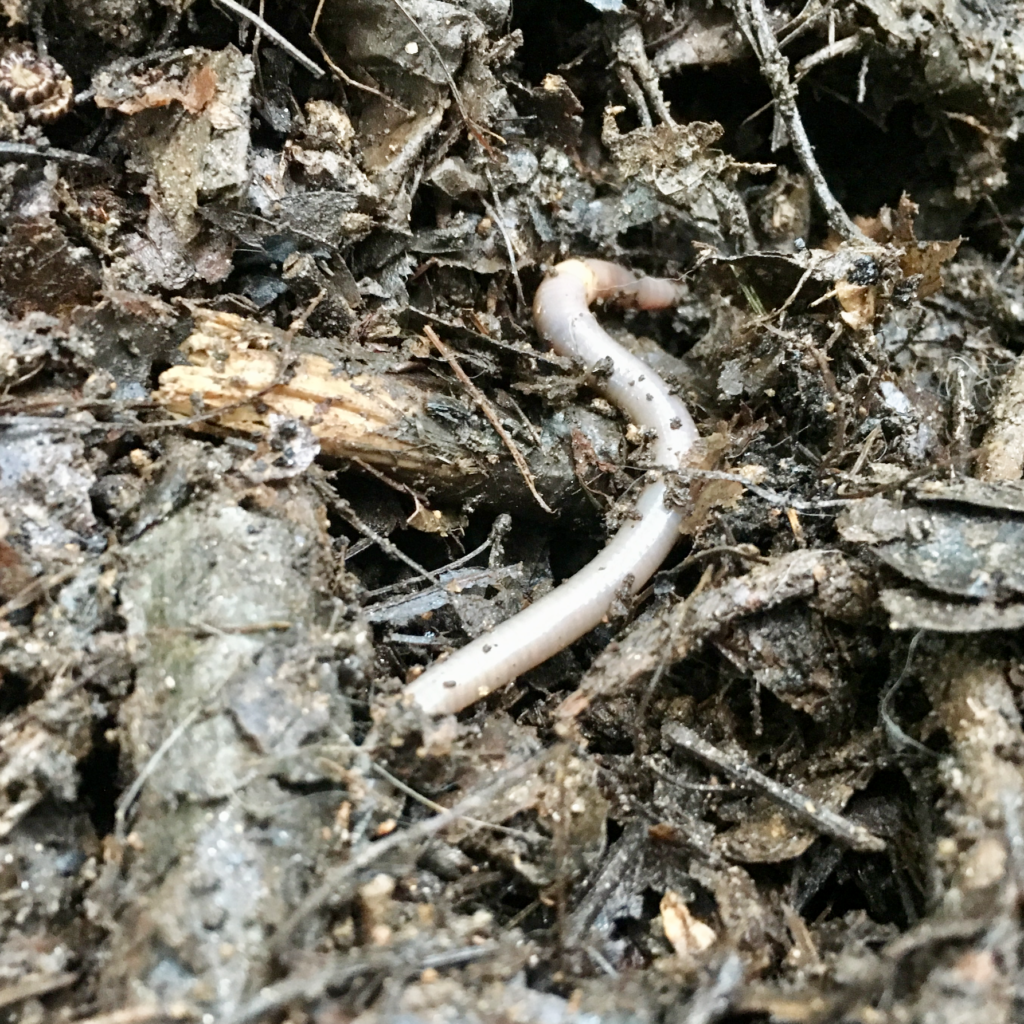
There is one other massive benefit to composting that I’ll get to toward the end.
The only real disadvantages to composting are a little bit of time and labor, but I’m managed to contort these into benefits in my mind. I work from a computer. Since I’ve moved into the new digs I’ve had a lot more manual stuff to do and I’m backing away from the computer more and more. Since I started composting, I always viewed turning the compost as a great mental break, a literal opportunity to interact with the earth. If you work on your ass, having a compost pile to stir and tinker with is an excellent reprieve from indoor activity.
How To: Starting a Compost Pile
There’s not a lot to starting a compost pile. Step one: find some organic matter. Step two: pile it up. Seriously – that’s basically it, but obviously I’ll explain in a little more detail.
In this sense “organic” doesn’t mean what it means at the grocery store. At the grocery store it means “twice as expensive” and “grown with different pesticides and fertilizers.” In the way we are talking about it, organic just means it’s made from plants. Generally, people start with leaves and grass clippings, like I did. These are bulky, generally abundant, clean sources of compostable material. You can also add a whole bunch of other stuff to your compost pile.
There is a balance that needs to be struck with regards to compost pile ingredients. The ideal balance would be 50% “green” matter and 50% “brown” matter. Grass clippings and fallen leaves are excellent of each, respectively. Green materials are high in nitrogen. Brown materials are high in carbon, and provide bulk/loft (and air space) to the pile. In the next section I’ll go through some green and brown materials.
What To Put In a Compost Pile
Food Scraps: In our house we throw away very little food. Almost everything we don’t eat falls into one of two categories: dog food† and compost. Though it is possible, we don’t compost meat and dairy products; these often end up being addenda to our dogs’ meals. Every other food item goes into the compost pile: onion scraps, fruits and veggies that have sat too long, coffee grinds, tea bags, corn meal/flour used to bread stuff, used cooking oil, corn cobs/shucks, avocado skins and pits, egg shells, kombucha SCOBY…this list could be a long one. The majority of food products are “green” material.
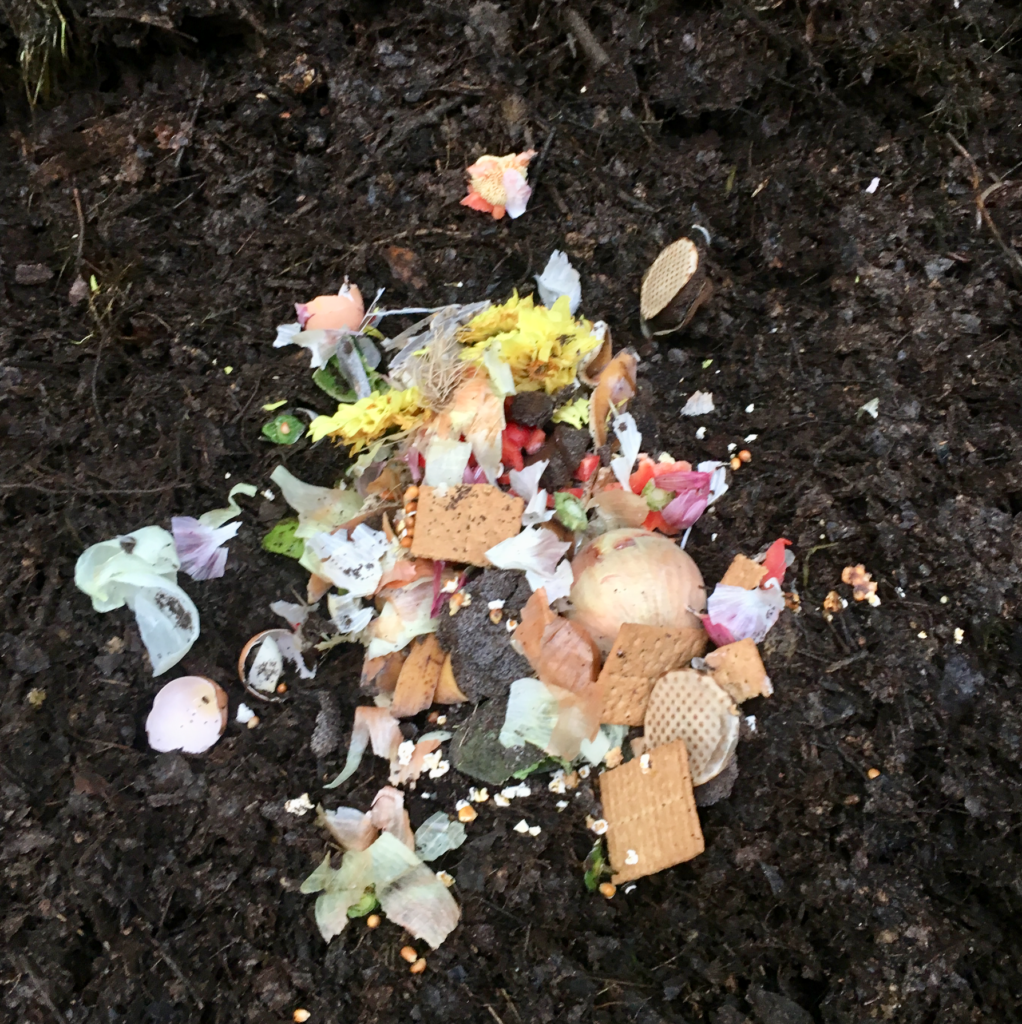
Paper products: You can also put paper products in your compost pile. We no longer throw away paper towels after a single use. They get dropped in our compost bin and make their way to the compost pile. The same goes for the egg cartons that can no longer be reused, paper produce baskets, Q-tips, and lightweight cardboard packaging. We also empty the bin of our paper shredder into the compost pile. Decomposition is probably the most secure possible way to get rid of your sensitive papers, and it adds carbon back to your soil.
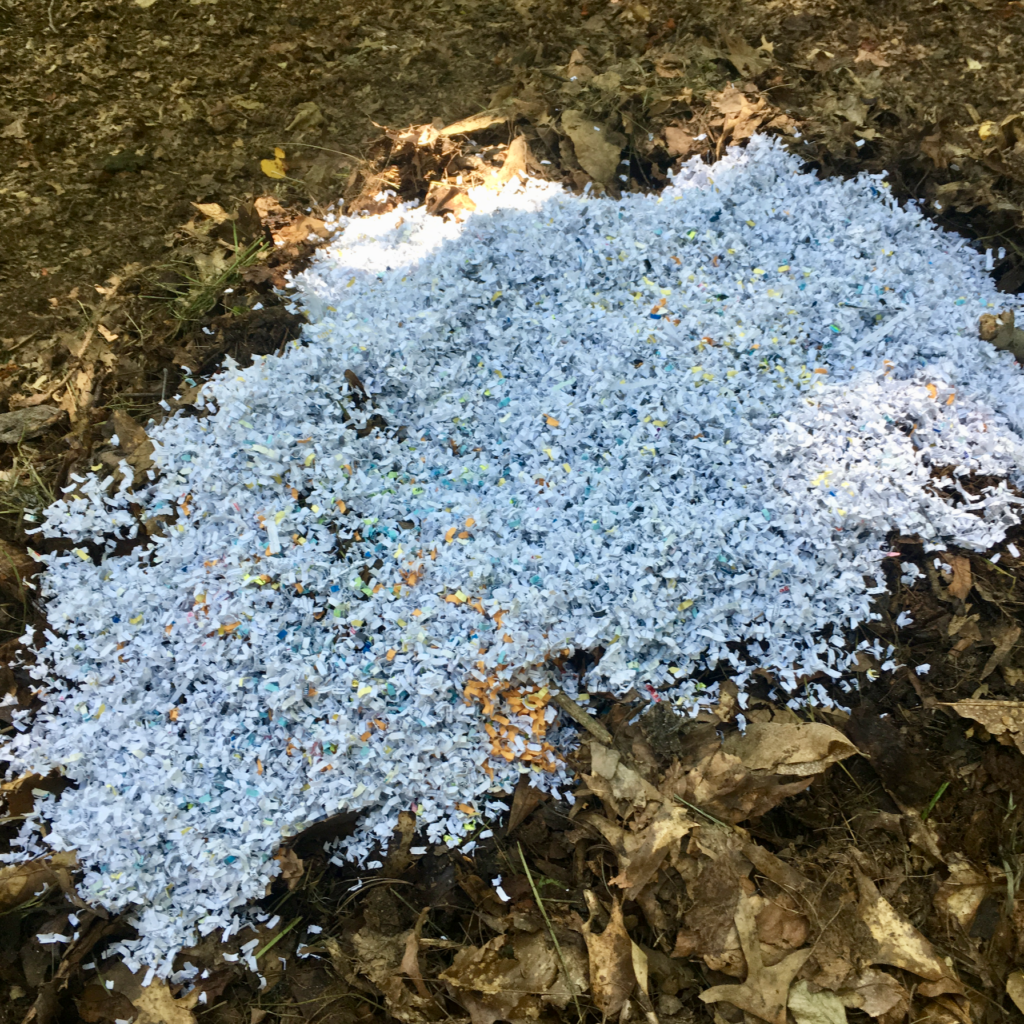
Ashes: Ashes are another pretty common ingredient in our compost pile, though not in huge quantities.
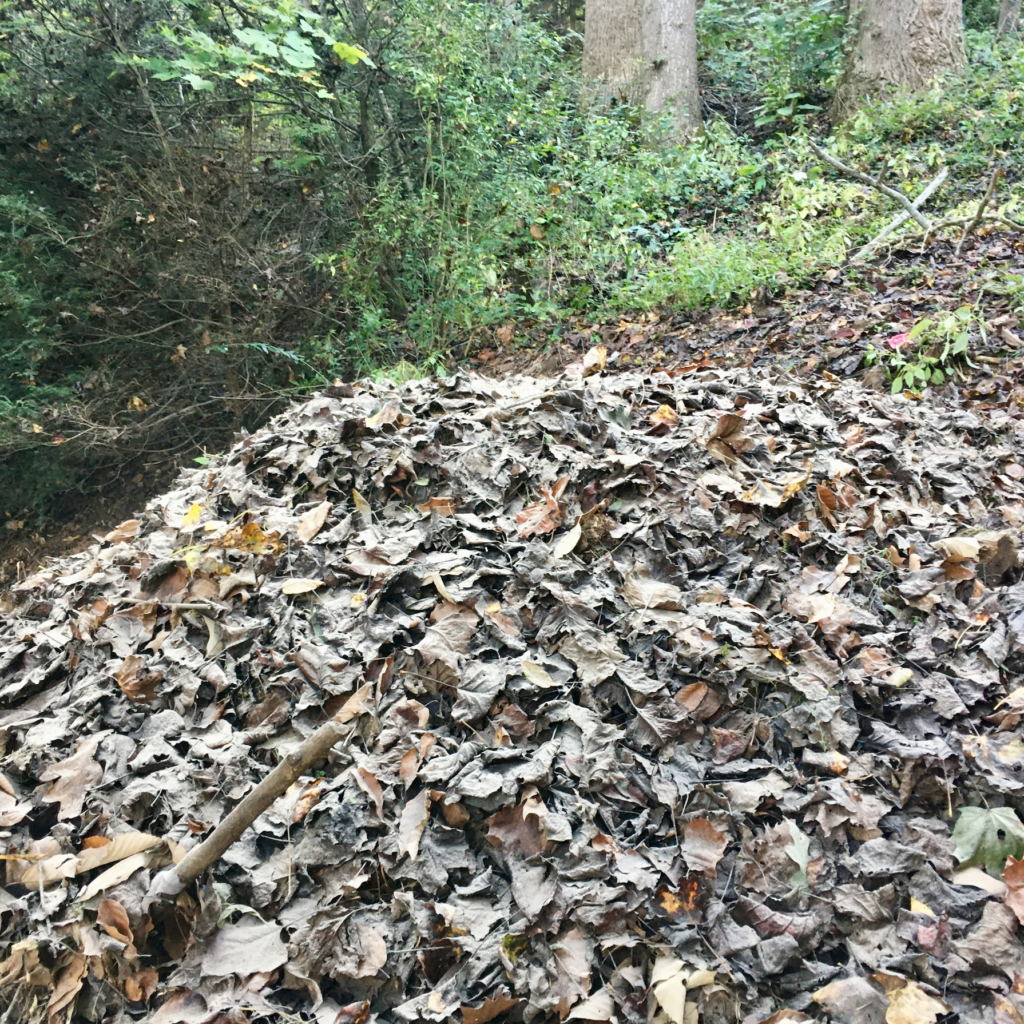
Yard waste: All of our yard waste goes into the compost pile. This includes leaves, grass clippings, pulled weeds, twigs, etc.
What You Can’t Compost
This article is talking about aerobic composting. There are some things you shouldn’t compost in this way.
Dog & Cat Waste: With three dogs we have a near infinite supply of dog shit. Unfortunately, none of it can go in the compost pile. Carnivore waste contains parasites that won’t be killed by composting. This could render your entire garden soil a vector for pathogens. The same goes for human waste, generally. Carnivore waste (including human waste) can be composted, but it must be composted though a different process.
Meat, Fat, Bone, Skin: While you can compost animal products via anaerobic decomposition, you can’t do so aerobically. Don’t throw animal products into this compost pile.
Making Compost Happen Faster
There are some tricks you can use to make your compost pile break down faster.
Freeze Your Stuff: Almost all of the food waste that we put in the compost pile gets frozen before being put out there. There are two reasons for this. The first is simple convenience; we don’t want a smelly container of food scraps sitting out on the counter. We purchased a small Rubbermaid bin that fits well in the fridge. All of our compostable food waste gets dropped right into it.
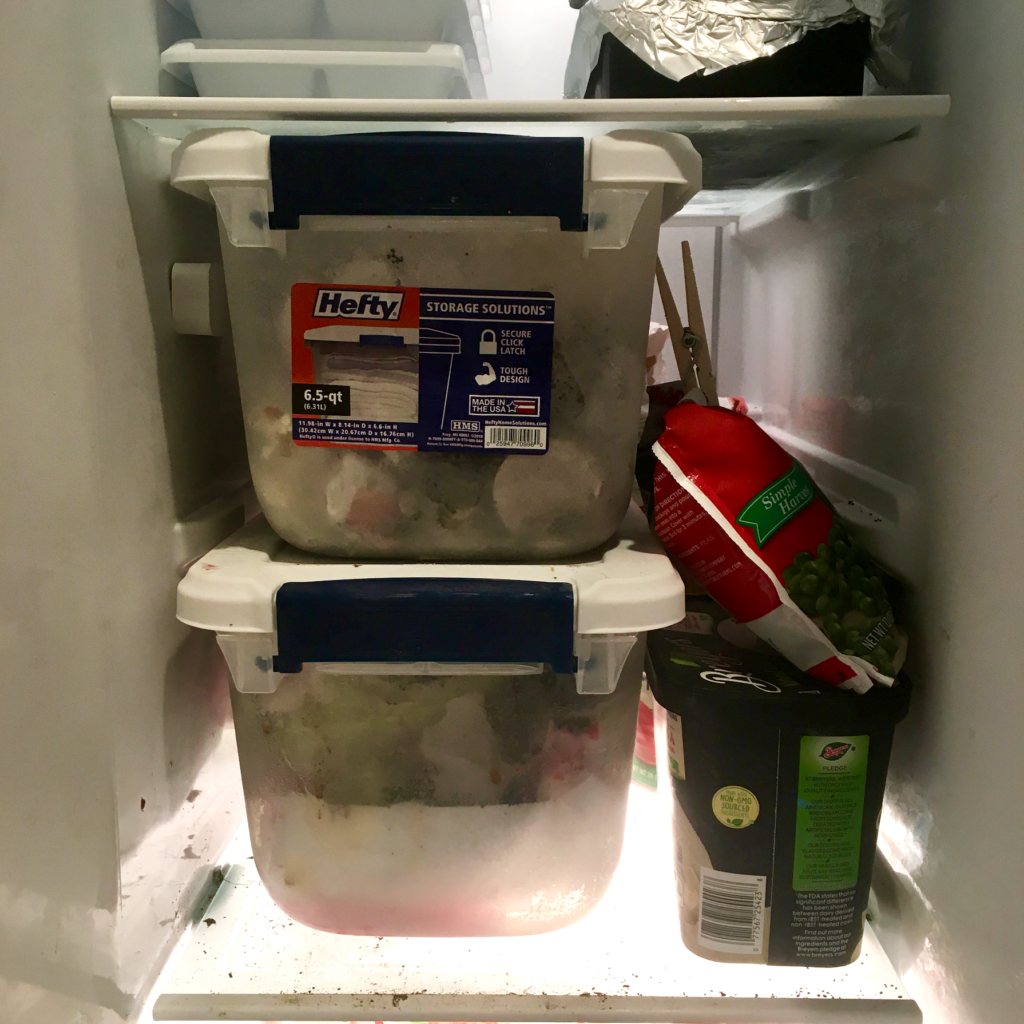
This also makes some things break down faster. Freezing lettuce or pieces of tomato, for instance, will cause ice crystals to form. These crystals pierce the cells. When a frozen head of lettuce thaws it’s basically a pile of mush. This lets worms and bacterial consume it more easily; the end result is it breaks down extremely quickly in the compost pile. This won’t work for everything. Freezing egg shells or corn cobs won’t do anything to help them break down, so there’s one more strategy you can use.

Break Things into Smaller Pieces: There are a few things that take a long time to break down. Egg shells, corn cobs, avocado skins…you’ll see these things hanging out in your compost pile for several weeks and possibly months. You can accelerate their decomposition by breaking or cutting them into smaller pieces.
Eggshells should get crushed, corn cobs broken/cut into 2″-ish pieces, and avocado skins cut as small as you have the patience for. Paper should also be torn up. Even things that aren’t necessarily “difficult” to break down can benefit from being cut up; got a bad potato or onion? Quarter it before adding it to the compost. This simply provides more surface area for the compost’s bacteria and insects to work on these items.
Some people will go a step further and run all their compostables through a blender. We haven’t resorted to this; our compost is very active and doesn’t need a whole lot of help. In fact, I describe it as a pet that eats our garbage.
Working a Compost Pile
There are a lot of different ways to compost. There are store-bought compost tumblers, and instructions to build your own. You can build bins out of pallets…and probably a few other things I’m not thinking of. I like the good, old-fashioned pile, though. This will require a little bit of work on your part.
First, you’ll have to turn it. This is the best part, in my opinion. Turning it requires a pitchfork and 10 minutes to one hour, depending on the size of your pile. I like to turn the pile thoroughly every 3-5 days. It can sit longer, but the bacteria in the pile are aerobic bacteria (i.e., they need oxygen). Waiting longer to turn it can slow down their activity, and slow down the overall results. There’s little more gratifying than that first turn of the pile on a winter day, getting that rich, earthy smell, and seeing steam rising up out of it.
Stirring is also when you want to add food waste. You don’t want to throw the waste on top of the pile; this can attract all manner of vermin. I like to remove big layer of compost, drop my food in, stir it in, then cover it with the layer I removed. This generally keeps it covered. This isn’t a perfect solution to keeping animals from smelling it, but it’s definitely better than simply leaving food easily accessible.
You don’t want to turn your compost too often, though. One of the awesome things about compost is the heat it generates. It generates enough heat to kill most seeds you put in it, so you don’t have to worry about introducing weeds to your garden via your compost. If you turn it too often it can’t build up the necessary heat.
Maintaining Moisture
Your compost pile needs to be moist, not wet. If you’re really lucky you’ll get the perfect amount of rain, and your pile will get all the moisture it needs naturally. Realistically, you may have to cover your pile to keep it from drying out too fast, or to keep rain from drowning it. You may also have to water your compost to keep it moist enough.
If you do have to cover it, don’t cover it tightly. You don’t want to restrict air flow, as oxygen is a huge component in the system. The best way to do this is to stretch a tarp above the pile. This keeps the sun or rain off of it (as needed) but still lets it breathe.
The rule of thumb I’ve read/heard is to squeeze a fistful of your compost. If water runs out, it’s probably too wet. If it looks to dry, it probably is. There is a lot of good news here; if it gets too wet, all you have to do is let it dry out naturally. If it gets too dry, all you have to do is water it. Overall, a compost pile is a pretty damn tolerant ecosystem.
Knowing When It’s Done
So how do you know when it’s done? The better question might be, “is it ever done?” The fact is, you can keep adding material to your compost pile as long as you like. There’s nothing wrong with continuing to add material, but your pile will get massive and difficult to turn. Also, once it is “finished” you’ll want to use it on your garden.
To me it’s finished when I need to turn it with a shovel rather than a pitchfork. If you’re turning your compost on a regular basis, it should be ready within three to four months (maybe more, maybe less). Once all of the large matter has broken down, you probably want to stop adding new material to it and begin a new compost pile. Another two to four weeks of regular turning should have it ready to go.
One More Thing
Earlier in this article I mentioned that there was one other massive benefit of composting. Here it is:
Composting is an extremely elegant solution to a lot of the trash problems you will have in a long-term survival event. We try to be really good about composting anything that is compostable. Still, if I dug through out trash can right now, probably half the crap in there could be composted if I really wanted to.
Have you though about what you’re going to do with trash when you start eating through all those cans of ravioli or cooking all those Mountain House meals? If you haven’t, you should. Some of your trash won’t be compostable‡, but some percentage is, and everything you compost is something you don’t have to get rid of by burning/storing/burying/hauling away.
Composting – the art of making fertilizer out of garbage – is one of the most basic of gardening skills. If you’re serious about being prepared for long-term events and aren’t composting. . . you aren’t serious. Start a damn compost pile!
†There is a little bit of food “trash”. We don’t feed the dogs any cooked bones (i.e. chicken bones or pork ribs). We also won’t give them anything containing an ingredient that is harmful to dogs, like onion.
‡There are some crazy stories of people composting all kinds of stuff like nylon material and sweatshirts. Probably more stuff is compostable than you – or I – think, but obviously some of this stuff takes longer to break down.





